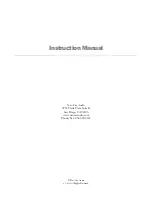
Americas Headquarters:
Cisco Systems, Inc., 170 West Tasman Drive, San Jose, CA 95134-1706 USA
B e t a D r a f t f o r R e v i e w - C i s c o C o n f i d e n t i a l
© 2008 Cisco Systems, Inc. All rights reserved.
QoS in a Wireless Environment
This chapter describes how to configure quality of service (QoS) on your Cisco wireless mobile interface
card (WMIC). With this feature, you can provide preferential treatment to certain traffic at the expense
of others. Without QoS, the WMIC offers best-effort service to each packet, regardless of the packet
contents or size. It sends the packets without any assurance of reliability, delay bounds, or throughput.
This chapter consists of these sections:
•
Understanding QoS for Wireless LANs, page 1
•
Configuring QoS, page 4
•
QoS Configuration Examples, page 4
Understanding QoS for Wireless LANs
Typically, networks operate on a best-effort delivery basis, which means that all traffic has equal priority
and an equal chance of being delivered in a timely manner. When congestion occurs, all traffic has an
equal chance of being dropped.
When you configure QoS on the WMIC, you can select specific network traffic, prioritize it, and use
congestion-management and congestion-avoidance techniques to provide preferential treatment.
Implementing QoS in your wireless LAN makes network performance more predictable and bandwidth
utilization more effective.
When you configure QoS, you create QoS policies and apply the policies to the VLAN configured on
your WMIC. If you do not use VLANs on your network, you can apply your QoS policies to the WMIC’s
Ethernet and radio ports.
Note
When you enable QoS, the access point uses Wi-Fi Multimedia (WMM) mode by default.
















































